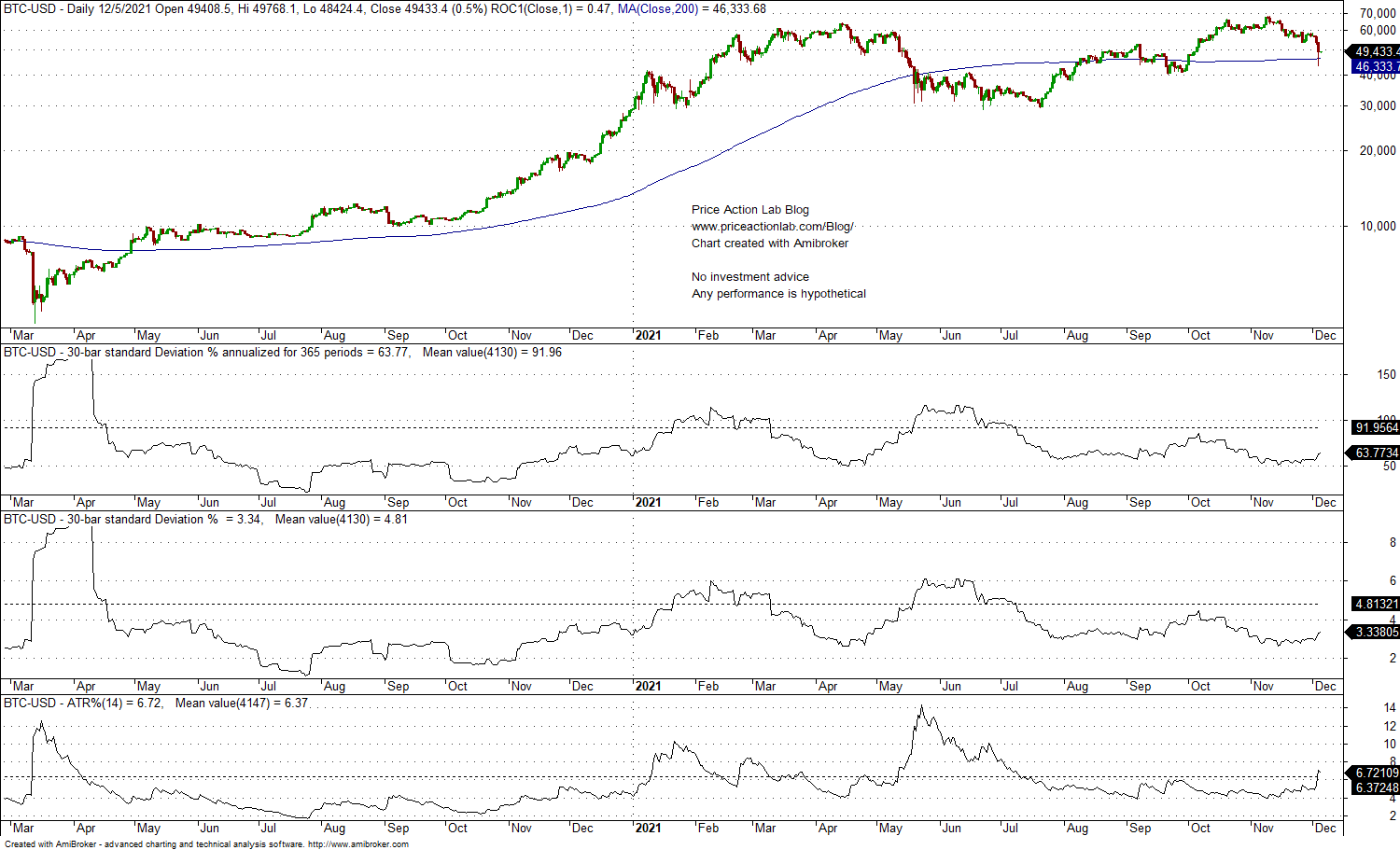There may be some serious adverse effects from trading high volatility markets and especially those that trade around the clock, 24/ 7/365. Besides the real possibility of total loss of capital, these may include deteriorating health and wrecked relationships.
It’s common that when people start trading they are attracted to higher risk markets and even high leverage. After all most people want to get rich fast. Most of us have passed though that stage. When I started there were no 24/7/365 crypto markets but there were plenty of commodity futures that allowed high leverage. Although I traded a systematic trend-following strategy, due to the leverage from using currency futures, I ended up sleeping with a quote machine next to my bed to watch overnight spot currency rates. After close to one year of trading and although my trading partner and I were lucky to have made some good money, I was already a burnout. I decided to quit the partnership, attributed our profits to luck and traveled around to spend it. I restarted trading after I had studied carefully the risks and the tradeoffs.
Nowadays, besides futures leverage and margin there are also 24/7/365 crypto markets that have attracted the majority of retail speculators. Most people are lured in by the high profit potential and don’t realize these are zero-sum games: there is no way for anyone to profit without someone else providing the profit. Therefore, some are unaware that essentially they are not a united crowd trading those futuristic markets but a “wolf alliance”.
Some people I know sleep with their phone next to them and wake up several times during the night to check prices. This pattern in the long term may cause sleep deprivation and even wreck relationships. There may be serious health effects from continuous stress when trading high volatility markets, such as bitcoin, for example.
Bitcoin fell about 16% and erased nearly three months of gains in a matter of a few hours, from about 3:00 pm Friday, December 3, 2021, to 12:30 am Saturday, December 4, 2021. But this isn’t the first time something similar has occurred; it is a regular pattern in that market.
For someone who has invested 2% in bitcoin, a 16% drop in a few hours is probably no cause of stress although not always the case. But for those millions who think this is their way to becoming financially independent is a serious development and drawback; plans are pushed back by several months or even years. When this occurs on a Friday when most traders used to go to happy hour for cocktails, then the weekend is ruined and is spent watching prices amid emotional stress.
My research suggests that retail trading profits are possible from markets with low volatility even if potential is lower and markets with high volatility usually generate losses in the long-term that become the profits of those who make those markets.
Below is a chart that shows daily bitcoin prices and three volatility measures: annualized 30-day standard deviation, 30-day standard deviation and 14-day ATR percent.
The 30-day annualized standard deviation is 63.77%, the 30-day standard deviation is 3.34% and the 14-day ATR is 6.72%. Those volatility measures are one order of magnitude higher than the equivalent in SPY ETF, for example.
At these levels of volatility as in bitcoin, most traders are ruined in the longer-term. It takes one large loss to erase gains from several months. There are also the lucky ones who escape ruin to make some money and think they profited due to their technical analysis skills. In every market where money is recycled via high volatility trading, there will be outliers to the right of the distribution. These are the examples to avoid, not to follow.
Trading high volatility 24/7/365 markets in my opinion may result in:
- Sleep deprivation.
- Deteriorating health.
- Financial ruin.
- Wrecked relationships.
- Erratic behavior.
However, everyone is responsible for their own decisions. I just expressed my opinions in this article. Nothing in this article constitutes financial or other advice.
Charting and backtesting program: Amibroker.
You may follow this blog via RSS or Email, or in Twitter. Disclaimer
10% off for blog readers and Twitter followers with coupon NOW10







